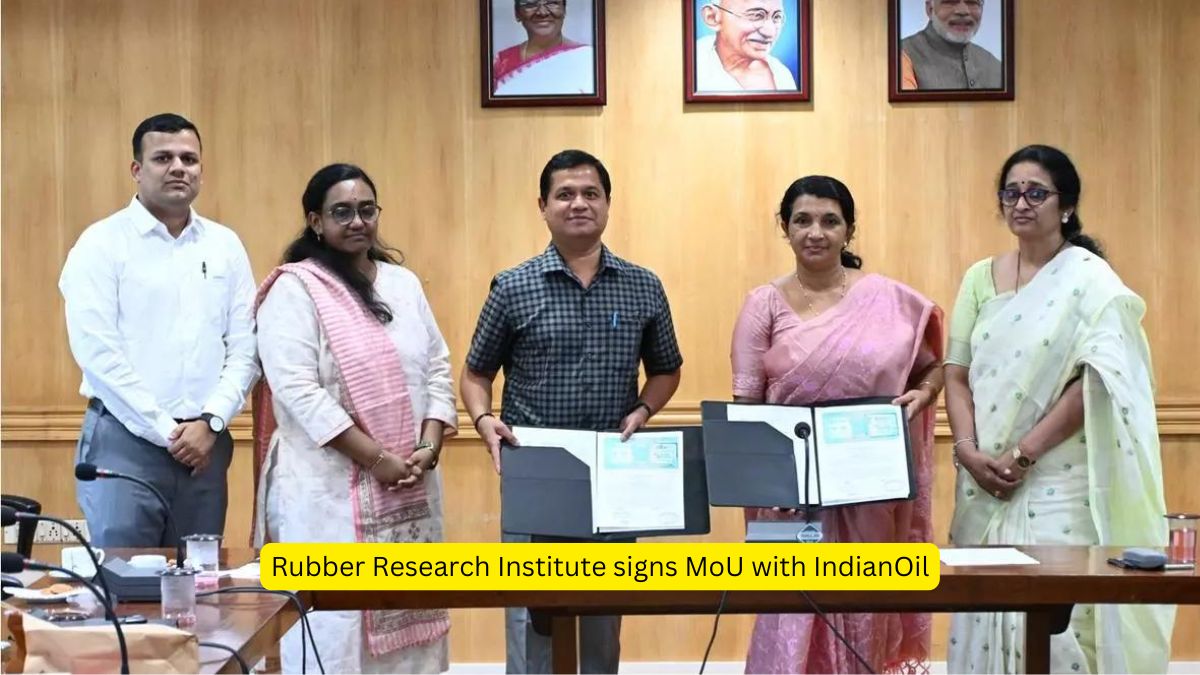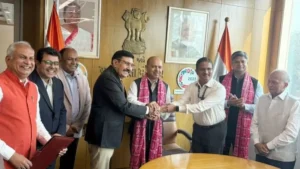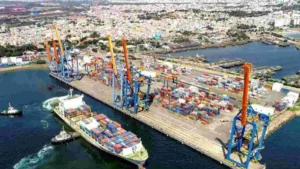A memorandum of understanding was signed between Rubber Research Institute of India (RRII) and Indian Oil Corporation Ltd (IOCL) to enhance the research on using Rubber Process Oils marketed by IOCL in different tyre and non-tyre rubber products.
Aim & Objective
- This collaboration aims to improve product performance and rubber processing across these applications.
- The partnership reflects a shared commitment to drive innovations in rubber processing while addressing the growing global demand for environmentally sustainable industrial products.
Focus Areas
- Impact of process oil : On assessing the impact of different rubber process oils provided by IOCL on the performance of both tyre and non-tyre rubber products, with the goal of optimizing efficiency and durability.
- Sustainable : By incorporating sustainable oils, the initiative aims to reduce environmental impact and develop safer materials for industrial use.
Work distribution
- Manufacturing trials and related activities will take place at the Technical Consultancy Division of RRII.
- Through this partnership, RRII and IOCL aspire to lead the development of next-generation rubber compounds and promote responsible manufacturing practices in the industry.
About Rubber Process Oil
- Rubber Process Oil (RPO) is produced by a crude oil distillation process obtained from the composition and chemical interactions and the isolation material extracted called Raffinate.
- The primary characteristic is the presence of the double bonded mix ring carbon structure.
Rubber Research Institute of India
- Established in 1955 as the research department of the Rubber Board under the Ministry of Commerce and Industry, Government of India.
- The Rubber Research Institute of India (RRII) has completed sixty five years of sustained growth and achievements.
- The Institute takes up research on all aspects of natural rubber cultivation, processing and products manufacturing.
- Improving competitiveness of the entire value chain of the Indian rubber industry by reducing cost of production and enhancing quality is a priority area of research.




 Banas Dairy & BBSSL Join Forces to B...
Banas Dairy & BBSSL Join Forces to B...
 MSDE & Autodesk Team Up to Revolutio...
MSDE & Autodesk Team Up to Revolutio...
 Andhra’s Coastal Dreams: Vizag Port Sign...
Andhra’s Coastal Dreams: Vizag Port Sign...







